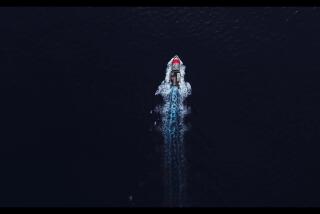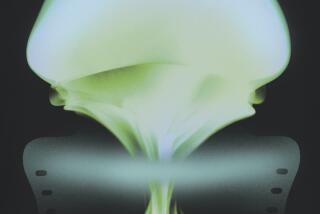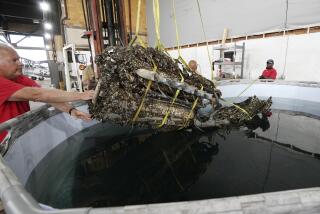A Man With a Mission : Long Search for Missing B-25 From Doolittle’s Raid at Crucial Stage
- Share via
CAPISTRANO BEACH — Walter Kurilchyk didn’t know what he got himself into when an aviation hobby turned into an obsessive search for the last remaining B-25 airplane from the late Gen. Jimmy Doolittle’s fabled 1942 bombing raid on Tokyo.
“It started in about 1980,” Kurilchyk recalled. “It was just a hobby then.”
The hunt for the elusive twin-engine World War II bomber has cost Kurilchyk thousands of dollars on expedition equipment and travel to Alaska and Russia, where he knocked on doors of former Soviet air force officers, seeking help.
Along the way, parts of Kurilchyk’s Capistrano Beach residence have been transformed into a makeshift B-25 Search and Rescue Headquarters, with walls lined with maps, files of old photographs and boxes upon boxes of documents, including a letter from Doolittle himself.
But Kurilchyk, a retired real estate appraiser for the federal government, said he is now too old to keep up the quest, at least physically. At 74, he has not given up hope of finding the last of the 16 bombers that flew over Japan just four months after that country’s devastating attack on the U.S. fleet at Pearl Harbor.
*
“I’m physically, emotionally and financially at the end of the road on this thing,” Kurilchyk said. “But with my last trip to Russia, I’m almost certain that it won’t be long before we get access to the plane.”
Immediately after the raid on April 18, 1942, the other 15 airplanes flew toward China and either crashed or ditched at sea.
Most crew members survived. At the time, Doolittle’s raid was the first offensive after Pearl Harbor and helped buoy U.S. war hopes. It also became the subject of the wartime classic, “Thirty Seconds Over Tokyo,” which starred Spencer Tracy and Van Johnson.
One B-25, No. 2242, piloted by Edward J. York, landed near Vladivostok in Russia and was seized by the Russians. Kurilchyk believes that he will find it there after all these years.
Information that he has uncovered includes a Vladivostok newspaper photograph taken in about 1950 of the B-25 in flight. The photograph fuels Kurilchyk’s belief that the craft still may be found intact.
“After landing in Russia, it was flown 107 hours,” Kurilchyk said. “It was used to shuttle mail and military personnel [in Russia]. Then it was overhauled with two new engines and flown to a station in Unashi, in eastern Russia.”
Retired Air Force Capt. Alexander D. Ciurczak of Capistrano Beach, who won the Distinguished Flying Cross twice in World War II, said interest has intensified in recent years about the recovery of old U.S. war planes.
“If they could find a B-25 that was used on the Doolittle raid,” Ciurczak said, “you can imagine the publicity from it. It would be all over the world immediately.”
Frederick Johnsen, aviation historian at Edwards Air Force Base, said discovery of the Doolittle bomber would be significant on two fronts. First, most of the remaining B-25s in the world are not combat veterans, he said.
“And, secondly the Doolittle raid is probably one of the five most prominent missions of World War II that the Air Force [then called the Army Air Corps] ever flew,” Johnsen said. “Also, Jimmy Doolittle was one of the all-time heroes of American aviation.”
As far as dropping bomb tonnage, the Tokyo raid was not that effective, Johnsen said. But it marked the first time after the bombing of Pearl Harbor that the U.S. hit the enemy’s homeland.
“It took the Japanese by surprise,” he said. “It forced them to reevaluate their air defense network around Tokyo, and they had to recall some airplanes back to Tokyo to guard against our doing that again.”
In the beginning, Kurilchyk’s search was slow. But in 1983, he wrote to the office of Rep. Ron Packard (R-Oceanside), which told him to seek help through the Soviet Embassy in Washington. As a result, a former Russian air force general offered Kurilchyk a deal.
The Russian would search for the American B-25, provided that Kurilchyk got people interested in the United States in finding the lost plane of Sigismund Levanevsky, a famous Russian aviator known as “the Russian Lindbergh.”
Levanevsky and five Russian airmen crashed near the Arctic Circle while trying to blaze a new polar route from Moscow to America on Aug. 15, 1937. At the time, the Russian aviator’s crash was front-page news around the world and set off one of the most intense international rescue efforts in history.
Kurilchyk formed a private, nonprofit corporation and enlisted the help of others, including David Stone, a geophysicist at the University of Alaska in Fairbanks, who joined Kurilchyk on a 1990 expedition for the Russian’s plane. It was Kurilchyk’s second expedition to Alaska.
“Levanevsky was one of many people trying to break flying records in those days,” Stone said. “Kurilchyk told what he knew of the hunt for the airplane, and I suggested the easiest thing to do would be to tow a large magnetometer. The project sort of intrigued me and it was a new way to test the magnetometer.”
With a magnetometer, the team was able to record iron below the thick ice where the plane is thought to have gone down. But bad weather and a magnetic storm prevented any discovery.
“We think we know where it is, but a lot of our evidence is circumstantial,” Kurilchyk said.
It’s Kurilchyk’s hope that he can lay the groundwork for a joint U.S.-Russian recovery effort.
“I can lead them there, we can find pieces of metal and verify that they are from the engine of [Levanevsky’s] plane,” Kurilchyk said. “And, the Russians can then take over the recovery effort.”
As for the last B-25, Kurilchyk said a visit to the Vladivostok region last December was fruitful. He made an important contact, he said, with the head of a Russian museum. But long trips now fatigue him.
And his team is not alone. It’s in a competitive hunt with other U.S.-based search efforts to see who finds the bomber first and can wrap up the rights to it.
Kurilchyk believes that the B-25--or whatever is left of it--remains near Vladivostok. He says he has a mountain of evidence, including interviews with former top-ranked Russian air force officials who have helped him track the plane’s whereabouts.
“It’s an important artifact,” Kurilchyk said, “an important part of U.S. history.”
He added in a lowered voice: “Nobody can help me here. I can’t motivate any official military agency in the U.S. to help me. This is historic. I don’t know what’s wrong with them.”
Air Force Secretary Sheila Widnall, whom Kurilchyk wrote repeatedly asking for support, could not be reached for comment. However, civilian Air Force personnel said that it is highly unlikely the military would get involved in a speculative and expensive hunt.
(BEGIN TEXT OF INFOBOX / INFOGRAPHIC)
In Search of History
Just one of 16 Doolittle bombers made a wheels-down landing after the famous raid on Tokyo during the early days of World War II. The plane, No. 40-2242 piloted by Capt. Edward York, landed safely in Russia and has not been seen since by Americans. A look at the plane and mission that launched Walter Kurilchyk on his search:
B-25 MITCHELL MEDIUM BOMBER
Dimensions
Height: 16 feet, 4 inches
Length: 53 feet
Weight (empty): 20,300 pounds
Wing span: 67 feet, 7 inches
Armament
Two .50-caliber machine guns in top turret
One .30-caliber machine gun in the nose
Crew
Five: Pilot, co-pilot, engineer, navigator-bombardier, gunner
Bomb load for raid
Mix of 500-pound demolition bombs and incendiaries
*
THE MISSION
Of the 80 pilots and crew who took off from the Hornet, 71 survived the raid. A brief look at the mission:
1. Planes take off from Hornet 668 miles from Tokyo
2. Tokyo and three other cities bombed
3. Eleven of 16 crews bail out over China; four crash-land near the Chinese coast
4. Bomber No. 40-2242 lands about 40 miles north of Vladivostok; plane and crew interned by Russians
*
THE LEADER
Lt. Col. James “Jimmy” H. Doolittle (1896-1993), leader of the Doolittle raiders, was awarded the Medal of Honor for his attack and eventually reached the rank of lieutenant general. A brief biography:
* Flight instructor during World War I
* Graduated from University of California; engineering doctorate from MIT
* World air speed record setter
* Commanded 8th Air Force in Europe and in Pacific during World War II
Sources: “The Doolittle Raid,” “The Illustrated Encyclopedia of Aviation,” Encyclopedia Britannica; Researched by TOM REINKEN/Los Angeles Times
More to Read
Sign up for Essential California
The most important California stories and recommendations in your inbox every morning.
You may occasionally receive promotional content from the Los Angeles Times.










